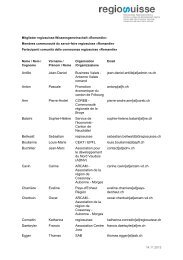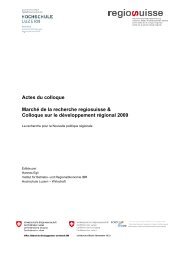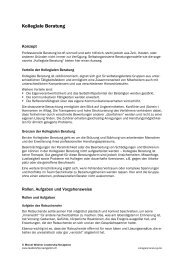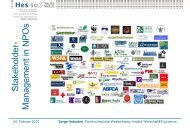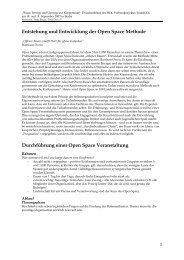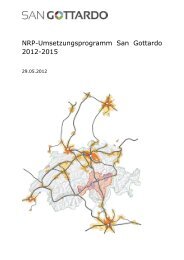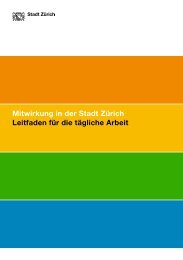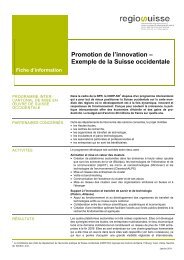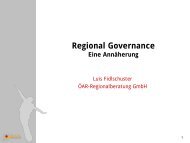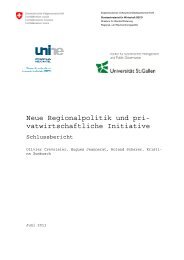Actes du colloque Marché de la recherche regiosuisse & Colloque ...
Actes du colloque Marché de la recherche regiosuisse & Colloque ...
Actes du colloque Marché de la recherche regiosuisse & Colloque ...
Erfolgreiche ePaper selbst erstellen
Machen Sie aus Ihren PDF Publikationen ein blätterbares Flipbook mit unserer einzigartigen Google optimierten e-Paper Software.
28 Alberto Bramantioffer a complex pro<strong>du</strong>ct/system; to reach economies of scale/scope; to enter newmarkets; to manage new technologies, etc.But a network rarely springs out spontaneously, and SMEs nearly always need thepromotion and the support for aggregating. The DRIADE project is an interesting<strong>de</strong>clination of this kind of policy, aiming at the emersion of new forms of aggregation.It addresses the clustering of firms (preferentially SMEs) within local pro<strong>du</strong>ctive systems,sectoral value chains, or technological p<strong>la</strong>tforms. The main goals are: i) to exploitnetwork col<strong>la</strong>boration among SMEs; and ii) to dynamically support the emergenceof new pro<strong>du</strong>ctive supply chains.The programme – which has taken the form of an open call – financed 7 networksand is organised into three phases. In the first one a ‘promoter committee’ – ma<strong>de</strong> upof at least twenty different actors – is in charge of scouting the potential networks, ofscreening the more promising ones, and finding out the microeconomic convenienceswhich allow firms to truly col<strong>la</strong>borate. The second step of the programme is theselection phase in which the stronger proposals are chosen and receive a financingfor the effective construction of the network. Here the work is directed to the rising ofagreement among the participating firms in or<strong>de</strong>r to evi<strong>de</strong>nce needs and select prioritiesfor the newborn clusters.Finally (the third step) is a call for innovative projects to which only the previously financednetworks can take part. The networking activity and the strengthening of thecluster are finalised to innovation which is the ultimate goal of the project, and in thejudgement of the participating firms this kind of assisted network is very effective inpromoting innovation.The main innovative features of the programme are certainly:– the two steps proce<strong>du</strong>re, which allows the scouting and supporting of potentialnetworks and the call for innovation projects within the network;– the joint presence of medium size high-tech firms and small ones, also with researchinstitutions and/or business services centres;– the strong role of the ‘promoter committee’ which is in charge of the preliminaryphase as well as the monitoring of the innovative project up to the market results(i.e., effective innovation).4 Internationalisation policy: removing barriers affecting SMEsInternationalisation is a very ‘buzz’ word and it is therefore important to c<strong>la</strong>rify themeaning and the context. It is obvious that regional export shares 8 are hardly modifiablewith some incentives to SMEs, differently small firms need to be sustained onthe foreign markets.The <strong>la</strong>st avai<strong>la</strong>ble data for Italy (2009, anno horribilis) tell us that on 253 billion dol<strong>la</strong>rsof export Italy has been the first exporter in the world for 240 different pro<strong>du</strong>cts, and8 In Lombardy SMEs internationalisation concerns a slight minority of the whole stock of firms: permanentexporting firms are some 39 000 in the region, representing the 4.8% of the operating firms.Export involves mainly neighbouring markets (German, Swiss and France markets absorb the <strong>la</strong>rgestshare of SMEs’ export).





